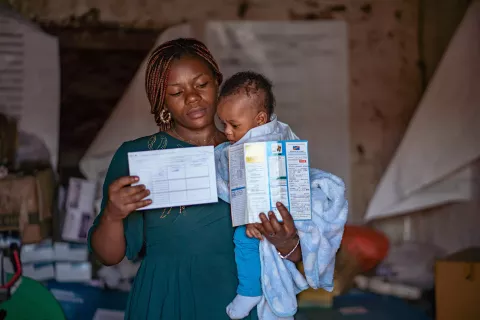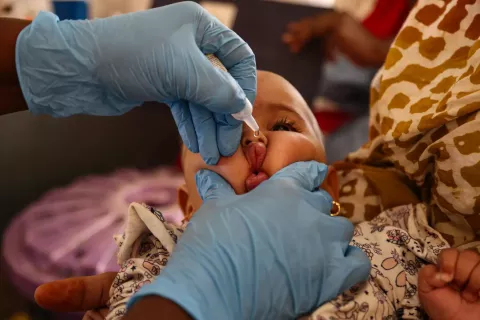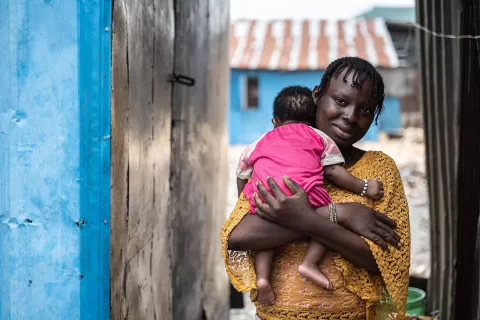Getting out of malnutrition through rapid treatment
In N'Djamena, Habena health centre is one of 825 health structures supported by UNICEF through European Union funding. It provides treatment for children under five suffering from malnutrition

Habena health center, in the south east of the Chadian capital N'djamena, is bursting with noise. About thirty women have gathered with their toddlers in the Outpatient Nutritional Unit, where the children will be checked up. This morning, the voice of the community health worker in charge of planning the morning appointments is covered by very vocal mothers and babies.
Coming to the Nutritional Unit is a real source of comfort for mothers whose children suffer from malnutrition: "this is my third appointment and my child's health has dramatically improved, says Fané Mahamat. He no longer has diarrhoea and he has regained his appetite."
The Habena health center is one of 825 health structures supported by UNICEF through European Union funding. It provides treatment for children under five years of age suffering from malnutrition- currently 179 of them, through the provision of therapeutic food, drugs for systematic and specific treatment (30,095 cartons of Plumpy Nut distributed in 2021). The health center has also provided training for 164 health workers, as well as community activities for prevention and behaviour change.

A difficult nutritional situation
In Chad, malnutrition is a public health problem and remains the leading cause of infant mortality. It affects millions of people, particularly children, seriously affecting their health and development. According to the SMART 2020 survey, the prevalence of global acute malnutrition (GAM) is 10.0%, including 2.1% of the severe form (SAM).
Several reasons can explain the persistence of malnutrition. Mothers often have very little knowledge of good infant and young child feeding practices by mothers. Children's illnesses (malaria, diarrhoea, acute respiratory infections) make children vulnerable and expose them to malnutrition. And last but not least, low productivity and food insecurity reduce the capacity of households to provide a balanced diet for infants and young children.
Timely treatment of acute malnutrition remains one of the solutions, according to Golbassia Vadandi, UNA Manager of the Habena health center: "When mothers come for consultation, we make sure that the treatment is quick and adapted to each child. We treat the illnesses, and we provide nutritional therapeutic food as well as medecines. We also give advice on good food and nutritional practices as part of prevention. When a child does not show up for follow up visits, our community relays look for these children in the community.”
A few weeks' treatment can make a dramatic difference. Children start smiling and playing again, and the mothers are more confident. Amira Abakar was extremely worried at first. Now her daughter, one-year-old daughter Achta Yacoub has almost no symptoms of malnutrition.
In addition to medical care, the fight against malnutrition includes promotion of exclusive breastfeeding until the child is six months old, and complementary feeding from the sixth month onwards; promotion of the continuation of breastfeeding until 24 months or more; promotion of healthy eating habits; public awareness campaigns on the importance of prevention, management and control of nutrition related to non-communicable diseases. All this support has been facilitated through funding from the European Union.




